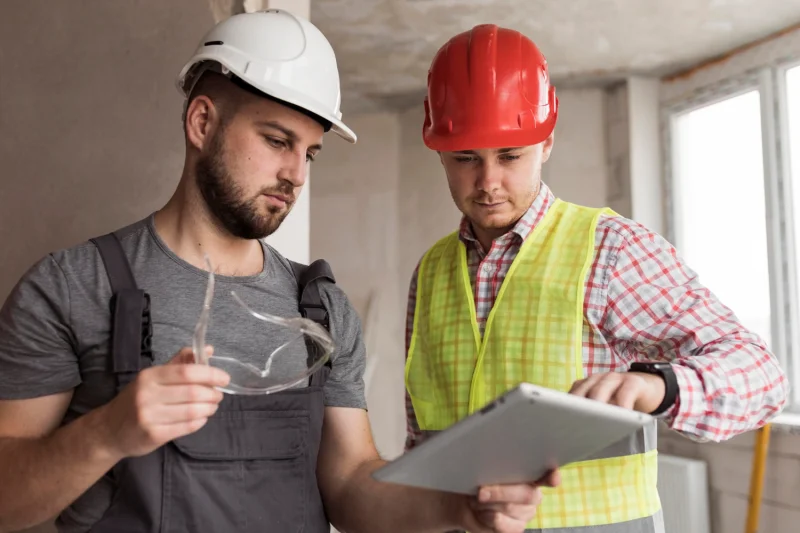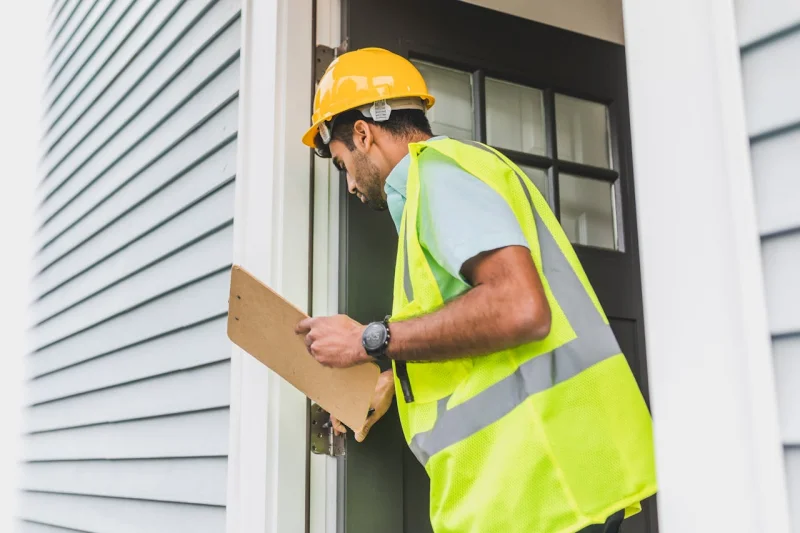The Role of Inspections in Safe Home Renovations

Renovation can be an exhilarating journey filled with hopes of crafting the space of your dreams, reflecting both your style and needs. But in among all of this excitement of planning the perfect kitchen or revamping an outdated living room comes risk; especially with older properties. To streamline this process and minimize risks, many professionals rely on builders software to manage project timelines, costs, and safety compliance efficiently.
Before picking up any tools or taking apart walls it’s critical to remember inspection services are vital; not only are they there for safety measures but they may help identify any hidden dangers which could scupper plans altogether. Understanding their role, particularly regarding asbestos abatement services is necessary for ensuring a smooth project and successful project outcome. Skirting board is trending nowadays. It uplifts the look of your home by providing sleek and nice features. Add elegance to your space with an LED Mirror from LED Mirror World. Bright, energy-efficient lighting to improve your bathroom experience. Visit for premium quality options!
A professional Bathroom Remodeler handles all aspects of renovation, from initial design concepts to final touches. With their knowledge, they can optimize space, lighting, and storage, creating a bathroom that elevates daily routines and increases the value of your home.
Understanding the Importance of Inspections
Home inspections serve a vital purpose: they protect you, your family, and any workers involved with renovation. An inspection may reveal potential dangers that aren’t readily evident – structural issues, electrical faults or potentially toxic materials such as asbestos, lead or mold could all pose threats that are hard to see at first glance.
Get an inspection before beginning renovation to identify and address potential issues before they arise, which could potentially delay or risk delays or health hazards during the project.
Common Hazardous Materials in Older Homes
Older homes present their own set of hazards when it comes to hazardous materials, so here are a few issues you might come across:
Asbestos
Asbestos was widely utilized in construction materials due to its heat resistance and durability, including insulation, floor tiles, roofing material, and paint. While asbestos itself does not present health hazards when left alone without renovation work or other activities being conducted on it; renovation work or other activities may disturb it by dislodging fibers into the air. Inhaling these fibers can lead to lung cancer and asbestosis in individuals exposed. If your home was built before 1980 an inspector must check for asbestos during an inspection.
Lead
Lead is another dangerous material commonly found in older homes, typically as paint and plumbing components. Homes built before 1978 may contain lead-based paint which poses particular health hazards for children who come in direct contact with it – including developmental delays or health concerns that result from exposure.
Mold
Mold thrives in damp and humid conditions, making it a significant threat in older homes with water damage. Not only can mold damage your property but it may also present serious health hazards including respiratory ailments and allergies; regular inspections will allow early detection before becoming an overwhelming renovation issue.
EGA Products specializes in high-quality material handling equipment, offering durable and innovative solutions for warehouses and industrial environments. Their wide range of products ensures efficiency and safety, making them a trusted leader in the industry.

The Inspection Process
Pre-Renovation Checklist
Before embarking on any home remodeling or renovation projects, it is imperative to create an exhaustive pre-renovation checklist. Start by hiring an inspector experienced in hazardous materials inspection. They can conduct an in-depth evaluation of your home to detect asbestos, lead paint, and mold risks – providing you with a clear view of any risks during renovation work.
What to Expect During an Inspection
A professional inspector will conduct a full home inspection, from attics, basements, and crawl spaces down. Utilizing advanced tools and techniques they’ll identify any potential dangers such as asbestos or lead. In many instances, they’ll even collect samples for laboratory analysis if suspected materials contain these harmful elements – all the while keeping you fully informed throughout this process as their insights could provide crucial guidance and suggestions from their knowledge base.
Professional Inspections Vs. DIY Assessments
Although homeowners might consider conducting their assessments, hiring professional inspectors is usually the better option. Trained inspectors possess both experience and knowledge that allow them to identify hazards that homeowners might overlook while understanding legal requirements surrounding hazardous materials; assuring your renovation meets safety regulations.
When Do We Call in Experts?
After Your Inspection
Following Your inspection findings, it may be necessary to consult professionals for asbestos abatement services or other specialized assistance. If an inspector identifies hazardous materials, immediate steps need to be taken to protect yourself and your family; professional services offer safe removal or containment solutions while mitigating risks during renovation projects.
Importance of Compliance
Compliance is of utmost importance regarding hazardous materials. Each region has specific regulations on how these should be managed safely; failure to do so, or managing these materials on your own can have severe legal and financial repercussions that must be dealt with immediately.
Conclusion
Ensuring the safety of your renovation begins with conducting an in-depth home inspection. By understanding any potential dangers present in older properties, you can take proactive measures to safeguard both yourself and your investment. Just remember: dealing with hazardous materials should never simply mean meeting regulatory compliance. Rather, its primary function must be creating a safe environment for everyone involved in your renovation project.
Ti potrebbe interessare:
Segui guruhitech su:
- Google News: bit.ly/gurugooglenews
- Telegram: t.me/guruhitech
- X (Twitter): x.com/guruhitech1
- Bluesky: bsky.app/profile/guruhitech.bsky.social
- GETTR: gettr.com/user/guruhitech
- Rumble: rumble.com/user/guruhitech
- VKontakte: vk.com/guruhitech
- MeWe: mewe.com/i/guruhitech
- Skype: live:.cid.d4cf3836b772da8a
- WhatsApp: bit.ly/whatsappguruhitech
Esprimi il tuo parere!
Ti è stato utile questo articolo? Lascia un commento nell’apposita sezione che trovi più in basso e se ti va, iscriviti alla newsletter.
Per qualsiasi domanda, informazione o assistenza nel mondo della tecnologia, puoi inviare una email all’indirizzo [email protected].
Scopri di più da GuruHiTech
Abbonati per ricevere gli ultimi articoli inviati alla tua e-mail.
